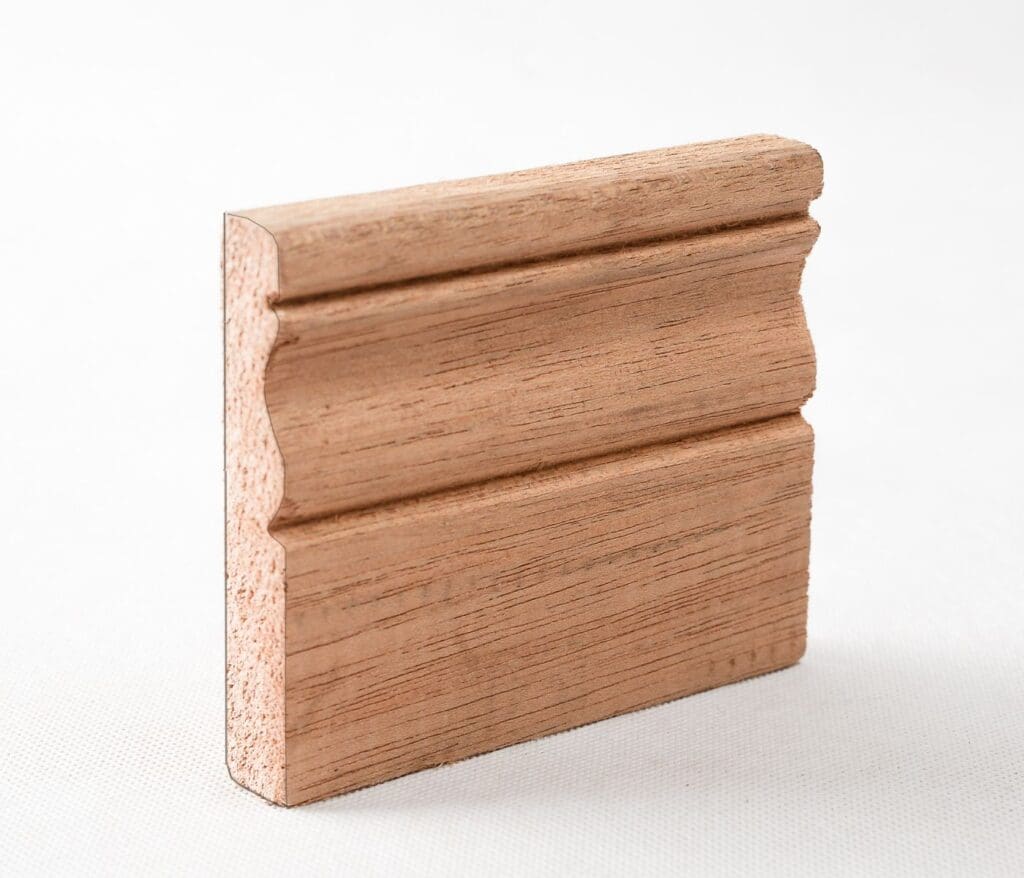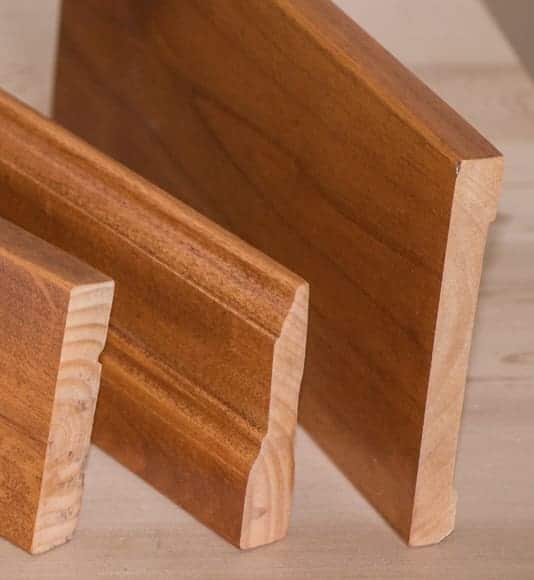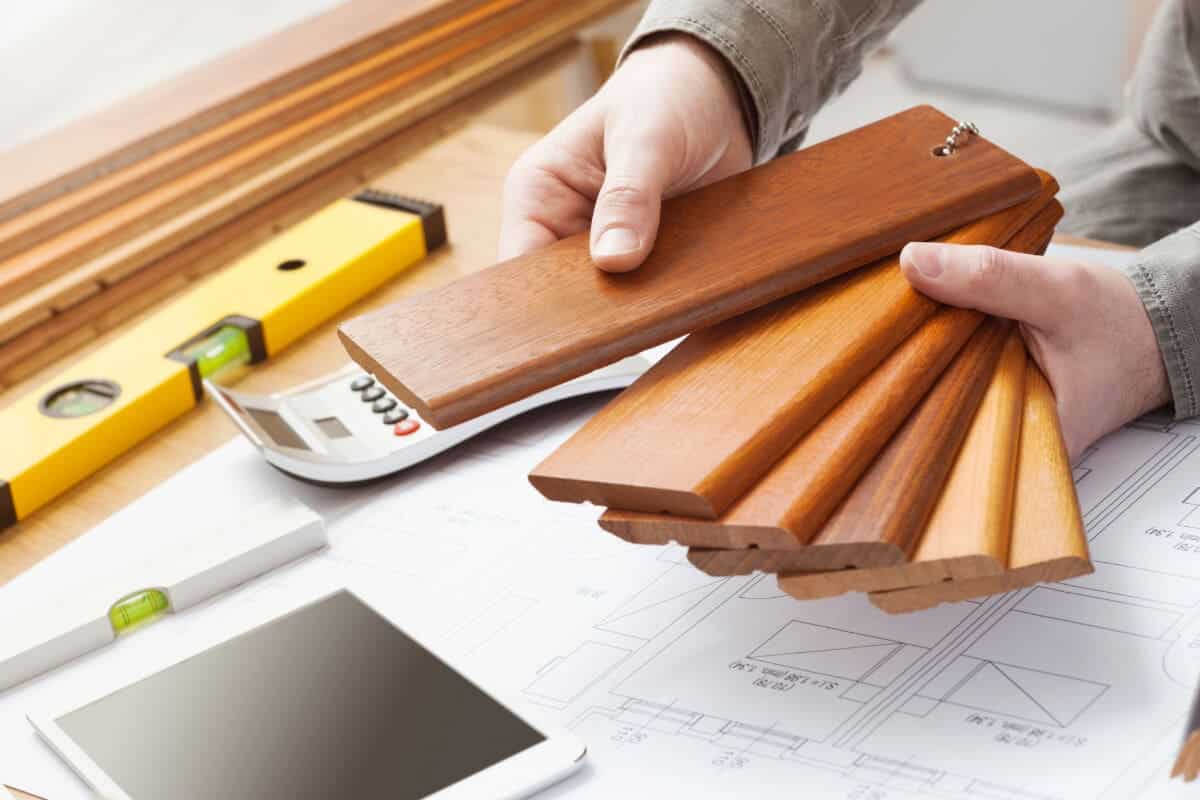The materials you choose are crucial in giving your home a fresh look. Every detail matters, from the feel of each room to how well it withstands daily life.
This includes seemingly simple items like baseboards, which do much more than meet the eye. In exploring wood and MDF (Medium-Density Fiberboard) options, we’ll uncover what makes each material unique and how it can influence your space’s style and durability.
Table of Contents
- Materials Overview and Characteristics
- Durability and Maintenance
- Cost Analysis and Installation Considerations
- Related Content
Materials Overview and Characteristics
Choosing the right materials can make all the difference when renovating or redecorating your home. Among the essential touches to any room are the baseboards. Yes, those strips that run along the bottom of your walls do more than look pretty—they protect the walls from damage and dust. Regarding materials, wood and Medium-Density Fiberboard (MDF) are two popular choices, each with its unique characteristics, benefits, and considerations.
Wood Baseboards: The Classic Touch
Wood has been a go-to material for baseboards for centuries, praised for its durability, traditional appeal, and finish varieties. Wood baseboards are a natural material that brings a warm and organic feel to interiors, fitting perfectly in homes that favor classic, rustic, or farmhouse styles. Available in numerous types, such as oak, pine, and mahogany, wood options offer a versatility that can match nearly any design aesthetic.

Wooden baseboards stand out for their longevity and resistance to wear. When properly maintained, they can last for the life of your home. They’re also relatively easy to install and can be painted or stained to complement your decor. However, wood is usually more expensive than MDF and might not be the best choice for budget-conscious renovations. It’s also worth noting that wood can expand or contract due to humidity and temperature changes, potentially leading to cracks or gaps.
MDF Baseboards: The Modern Alternative
MDF, a recent innovation, is made by breaking down hardwood or softwood residuals into wood fibers and forming panels by applying high temperatures and pressure. It’s become popular for many due to its cost-effectiveness and functionality.

One of the most significant selling points of MDF baseboards is their resistance to warping. This material handles humidity and temperature variations better than wood, maintaining a consistent appearance without the risk of cracking or splitting. MDF is also incredibly smooth; its manufacturing process eliminates knots and grains, which means it can provide a more consistent finish when painted.
Moreover, MDF is generally less expensive than solid wood, making it an attractive option for larger projects or those on a strict budget. The ease of cutting and installing MDF can also reduce labor costs. However, it’s essential to know that MDF can’t be stained like wood—you can only paint it due to the lack of natural grain. While it’s durable in shape, it’s more susceptible to damage; MDF can swell and deteriorate if exposed to water.
Choosing Between Wood and MDF Baseboards
Your decision between wood and MDF baseboards will likely depend on several factors: your budget, the look you’re going for, and any considerations related to the room’s environment (such as humidity). Wood offers a timeless appeal and durability that can be worth the investment. In contrast, MDF provides a cost-effective, smooth option that works exceptionally well in modern or contemporary spaces.
Every home is unique, and so are the choices that make it feel just right. Whether you opt for the classic elegance of wood or the sleek versatility of MDF, both materials can enhance the design and functionality of your space, adding that perfect finishing touch to your home’s interior.
Durability and Maintenance
Homeowners should pay close attention to the specifics of wood and MDF (Medium Density Fiberboard) baseboards regarding their durability and ease of maintenance. The resilience of a baseboard material greatly influences its longevity and day-to-day upkeep requirements, which are equally vital for cost-efficiency and overall home appeal.
Regarding durability, wood baseboards have the upper hand when discussing resistance to wear and tear. Crafted from solid timber, these baseboards can withstand the impacts and scuffs of life in a busy household. Whether it’s oak, pine, or another type of wood, the innate strength of wood provides a robust defense against physical damage. However, wood is susceptible to moisture damage over time, leading to warping or cracking in humid environments such as bathrooms or basements.
On the other side, MDF baseboards, while not as naturally tough as wood, hold up remarkably well under most ordinary conditions. MDF is engineered from wood fibers bonded with resin, which gives it a uniform density that can resist cracking and splitting better than some types of solid wood. MDF’s main vulnerability lies in its reaction to water; prolonged exposure can cause these baseboards to swell and deteriorate. This characteristic might rule MDF out for areas prone to moisture.
Both materials present unique maintenance challenges and benefits. Wood baseboards demand regular attention to keep them in tip-top shape. They may need to be treated or sealed to protect against moisture and require refinishing to erase dents or scratches over time. Nonetheless, the capacity to sand down and refinish wood baseboards means they can be restored to look brand-new, allowing them an extended aesthetic life.
While MDF baseboards cannot be refinished like wood can, they are straightforward to care for daily. Due to their smooth finish, they don’t easily harbor dust or dirt and can be wiped clean with minimal effort.
MDF models are typically pre-primed for paint, making them ready to be painted in any color. It is convenient for homeowners looking to match their baseboards with their interior design. However, due care should be given to avoid water exposure during cleaning, which is not ideal for every homeowner.
In summary, choosing between wood and MDF baseboards on the criteria of durability and maintenance comes down to weighing the importance of natural resilience against ease of care.
Wood offers robustness and a classic aesthetic with a bit more upkeep, while MDF provides a cost-efficient, hassle-free alternative that may need extra caution in damp areas. Understanding these distinct characteristics helps you make an informed decision that fits your home’s practical and stylistic needs.

Cost Analysis and Installation Considerations
Switching gears to the financial and installation aspects of MDF versus wood baseboards paints a compelling picture for homeowners. It’s all about balancing cost efficiency and aesthetics—a delicate dance that requires attention to wallet and visual appeal.
Regarding cost implications, MDF (Medium Density Fiberboard) is a budget-friendly choice, generally costing less than its natural wood counterparts. This affordability comes from MDF’s manufacturing process, which uses recycled wood fibers and resin. Because of this, if you’re working within a tight budget or have large areas to cover, MDF makes sound financial sense.
On the flip side, wood baseboards boast natural elegance and durability and command a higher price. The wood type chosen— oak, pine, or mahogany—further influences the cost. Luxurious options like cherry or walnut can significantly increase expenditure. Those drawn to the authentic charm and richness of real wood must be prepared to invest more upfront.
When considering installation, MDF baseboards again tilt the scale in their favor. Lightweight and easy to cut, MDF can be managed by DIY enthusiasts with minimal strife. The smoothness of MDF allows for easy painting, though it’s worth noting that pre-primed options are readily available, speeding up the finishing process. This ease of installation and preparation makes MDF particularly attractive for projects where time or skill level is a concern.
Wood baseboards, while not exceedingly difficult to install, present challenges not faced with MDF. Wood’s natural tendencies—notably, expansion and contraction due to temperature and humidity changes—require careful attention during installation to allow for movement. Cutting wood also demands more finesse and sharper tools to achieve the clean, precise lines desirable for an upscale finish.
Your home’s architectural style might also influence your decision. Period or high-value properties often benefit from the authenticity and ageless style wood baseboards bring. In contrast, modern, minimalist homes might better align with MDF’s clean lines and smooth finish.
Choosing between MDF and wood baseboards aligns your financial limitations with your aesthetic vision and practical requirements. Both materials offer distinct advantages that cater to different scenarios, making it crucial to evaluate which criteria—cost, maintenance, appearance, or ease of installation—hold sway over your final decision. This balancing act ensures your baseboards look stunning and offer lasting value and function in your home.

Deciding on the right baseboards for your home boils down to more than just picking out what looks good; it’s about finding a balance that works for your lifestyle, budget, and design preferences.
Whether you prefer wood’s timeless charm or MDF’s modern efficiency, understanding these materials in depth ensures that your choice enhances your home’s aesthetic and contributes positively to its overall environment. With careful consideration, you can select baseboards that offer both beauty and practicality for years to come.
If you are interested in seeing how Mondoro can be a valuable partner for you for wood furniture products – we would love to talk to you to see how we can help you.
Find out more about how Mondoro can help you create, develop, and manufacture excellent home decor and furniture products – don’t hesitate to contact me, Anita. Check out my email by clicking here or become a part of our community and join our newsletter by clicking here.
Mondoro gives out a FREE Lookbook to anyone interested. You can receive a copy of our latest Lookbook by clicking here.
Listen to our Podcast called Global Trade Gal. You can find it on all major podcast platforms. Try out listening to one of our podcasts by clicking here.
Subscribe to our Mondoro Company Limited YouTube Channel with great videos and information by clicking here.
Related Content
Is Nickel A Natural Element? All About Nickel And Its Everyday Uses
Nickel is a natural element as it is found in nature. It is a hard yet malleable and ductile metal with a shiny silver color with a slight gold tinge. Nickel is found mainly in Russia, South Africa, Canada, Australia, and some parts of China and Vietnam.
You can learn more by reading our blog, Is Nickel A Natural Element? All About Nickel And Its Everyday Uses by clicking here.
What Is The Mother Of Pearl Shell Used In Home Decor Products?
Mother of pearl, also known by the scientific name of nacre, is a pearl layer on the inner layer of the oyster shell. This pearl layer of the oyster is taken off the outer oyster shell. Then the leftover inner pearl shell is cut into various small shapes and sizes to be glued onto various home decor products such as mirrors, boxes, trays, and lamp bases.
You can read our blog on What Is The Mother Of Pearl Shell Used In Home Decor Products? by clicking here.
Home Interior Mirror Ideas, Manufacturing Home Decor Mirrors
Many Interior designers use mirrors to help them with their decorating. This is because a mirror can become a design focal point for any room. A mirror can help brighten a dark space and make a room look larger.
You can learn more by reading our blog, Home Interior Mirror Ideas, Manufacturing Home Decor Mirrors, by clicking here.

